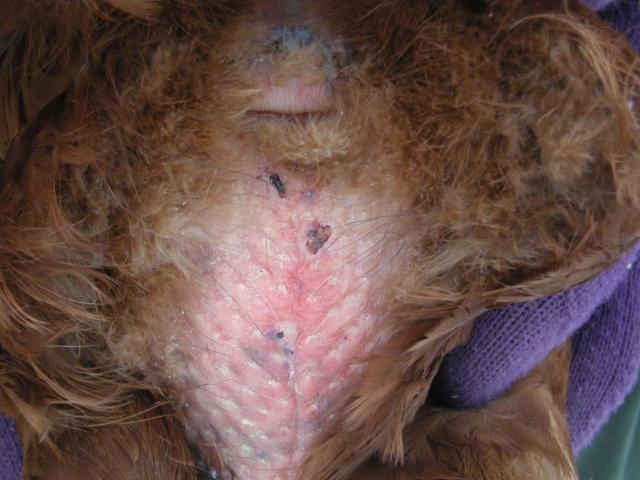- Jan 12, 2010
- 4
- 0
- 7
I have 4 hens who are approximately 8 months old. On 3 of them, the feathers have been picked clean from their butt/vent areas and I'm now seeing signs of feather picking on the legs and chests of two of them. I have checked closely for mites and see no sign. I have noticed the 4th hen (a buff orpington whose fluffy feathers are completely intact) pecking at the other 3, so I think that she may be the culprit. This began very recently - 3-4 days ago - and there have been no pecking order issues until now. I'm beginning to see scabbed areas on the 3 pecked hens, so I'm becoming very concerned. I'm sure other people have seen this - what can I do? Here's one of their poor naked butts:


Last edited:

